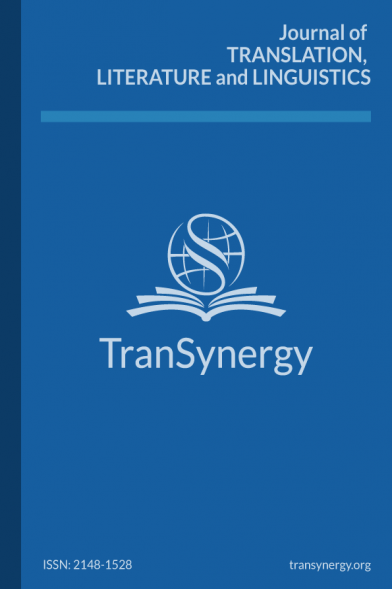V.S. NAIPAUL’S A HOUSE FOR MR. BISWAS: A STUDY OF LIMINALITY
Keywords: liminality, Naipaul, postcolonial, fractured identity, in-betweenness
V.S. NAIPAUL’S A HOUSE FOR MR. BISWAS: A STUDY OF LIMINALITY
Keywords: liminality, Naipaul, postcolonial, fractured identity, in-betweenness,
___
Argyle, B. (2002). Commentary on V.S. Naipaul’s A House for Mr. Biswas. Caribbean
Quarterly, 48(2/3), 109-118.
Ashcroft, B., Griffiths, G., & Tiffin, H. (Eds.). (1998). Key concepts in post-colonial studies.
Routledge.
Bahattarcharya, B. (2006). Naipaul’s New World: Postcolonial modernity and the enigma of
belated space. NOVEL: A Forum on Fiction, 39(2), 245-267.
Bhabba, H. K. (1994). The location of culture. Routledge.
Bakshi-Hamm, P. (2013). Masculinity under imperial stress, Mr. Biswas and V.S. Naipaul.
Gender Forum, 43, 1-10. https://search.proquest.com/docview/14373383347?9645
Boxill, A. (1983). Nothing will come of nothing. Commonwealth. 6(1), 19-29.
Diot, R. (1986). Fate and futility: Derision and black humor in A House for Mr. Biswas.
Commonwealth, 9(1), 72-81.
Naipaul, V. S. (1969). A House for Mr. Biswas. Penguin.
Nentea, M. (2010). A Pastoral for Mr. Biswas. Journal of Commonwealth Literature. 45(1),
97-114.
Quayson, A. (2000). Postcolonialism: Theory, practice or process?. Polity Press.
Saha, S. K. (2014). The notion of hybridity in Naipaul’s novels: A reading of the
Mystic Manseur, A House for Mr. Biswas and The Mimic Men [Unpublished MA
Thesis]. BRAC University.
Ying, Z. (2006). V.S. Naipaul’s A Way in the World contesting liminality by translating
the historical past. Literator. 27(7), 97-106.
Warner, M. (1970). Cultural confrontation, disintegration and syncretism in A House
for Mr. Biswas. Caribbean Quarterly, 6(14), 70-79.
- ISSN: 2979-9503
- Yayın Aralığı: Yılda 2 Sayı
- Başlangıç: 19.12.2022
V. S. Naipaul’s “One Out of Many”: In the Middle of Nowhere
From Colonial to Postcolonial: Dissemination of the English Language
Ursula Le Guin as a Feminist Self-Translator
Betül Hazal DİNÇER, Sinem SANCAKTAROĞLU BOZKURT
Training on Simultaneous Interpreting at Undergraduate Level in Türkiye: Analysis of Resources
V.S. NAIPAUL’S A HOUSE FOR MR. BISWAS: A STUDY OF LIMINALITY
